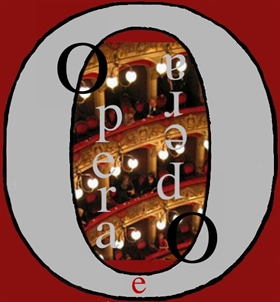EXCLUSIVE INTERVIEW in episodes for the COLUMN The Art Salon
by Natalia Di Bartolo © dibartolocritic
This with the Emilian bass Carlo Colombara will be an interview of mine sui generis, illustrated by numerous videos, which will continue over time "in installments" and which we have created together for the pleasure of sharing such an authoritative opinion on operatic voices in their most correct sense, to debunk false myths and legends about settings, types, modes, emissions, vocal colors, both male and female.

Each "episode" will consist of a video with a protagonist, the one who for the famous performer represents "the right vocality" for every type of voice that can be presented on stage. In short, his "vocal ideals", those who embody the proximity to perfection according to his parameters not only as a singer, but also as an authoritative teacher who has given his imprinting to dozens of students in numerous Masterclasses.
We will start from the bass voices, which represent the type of vocality that the Maestro frequents and practices in the major theaters of the world in almost thirty years of career, to then continue with all the other types of lyric voice: baritones, tenors, mezzo-sopranos , sopranos.
In short, today's singers: adapt to these parameters: it is advice from me, but an imperative from the M°. Carlo Colombara, whom I thank for his sympathy and collaboration here in mine Art lounge on operaeopera.com., where I am honored to receive him and host him in this interesting excursus.
(1)
NDB: Maestro, I see you as resolute and even a little angry, when it comes to operatic voices today... In fact, there are very few beautiful young voices... Voices capable, for example, of singing cabalettas as God commands...
CC: Sure! What is the use of singing Trovatore, Attila, Jerusalem, Lombardi, Norma, Nabucco and many other works with the cabaletta boringly sung twice, if you don't have the right voice? I'm not saying to do like Christoff who asserted: "But yes, once is enough!" Once yes, it could be fine, but with a little grit in the voice, a little nerves..and, if possible, with a little VOICE! This hybridum…docker.
NDB: So what to do with this cabaletta?
CC: The cabaletta must be performed twice only if with variations. However I think that the characters need more than anything else the right voice, the right drama, intensity in expression, rather than simply winning the race to get to the end anyway, "as per the score". We all idolize Callas because she has given a new expressiveness to the characters. But then, never like today, that great lesson is ignored. As a bass I speak of the basses, for example in Attila and Nabucco. Attila can't have a little voice.. God's scourge? It's ridiculous, it clashes with what he says. Zaccaria from Nabucco is a prophet, he doesn't speak softly, he speaks to the chorus, therefore…
NDB: So you always perform cabalettas twice?
CC: I performed the cabalettas of Nabucco and Attila both twice and only once. When I sang it twice I always tried to differentiate at least the color in the repetition. Repeating the same thing twice without any change seems to sing a "for those who have not understood" ... it seems like a tic! However, composers weren't stupid enough to write the same thing twice. The first is performed as written and the second with variations. The composers wrote the second cabaletta precisely so that the singers could vary it with virtuosity. Composers loved their singers!
NDB: What do you think of the "golden age" of opera, that of Callas and Di Stefano, so to speak?
CC: Yes, there was a period of opera that we all rightly call "golden". Why was it gold? For the grandeur of the installations? Perhaps. For the greatness of the conductors? Perhaps. For the quality of the singers? Safe!
NDB: But then if we used youtube, could you tell us what are, in your opinion, the voices that made that period "golden"?
CC: Of course, through youtube it will be interesting to review some of the voices that made that era "golden". The vocality, the quality of the timbre, the volume, the softness, the technique, etc. But above all the vocal timbre. Because it is precisely here that today there is great confusion, deliberately. Here: everything deviates too much from the videos that will follow, don't call them bass-baritones, bari-tenors, falcon sopranos and so on, but simply "short voices" or "hybrid-stamped" .. Because since some like myself have worked it's crazy to get close to those you'll listen to, sometimes hearing nonsense makes us uneasy… Well, let's go. And let's start with:
THE DEEP BASS
In Italy we had a great exponent of this category: JULIUS NERI.
Other notable deep basses were Matti Tavella from Finland and Jerome Hines from the USA.
A voice that has practically disappeared today, that of the deep bass, like the many more serious voices, the dragic voices. Whether for the high tuning fork, or for the change of lifestyle ... it is an established fact that by now the dredgers have practically disappeared. The deep bass voice has a range of about two and a half octaves and ranges from low C to high E-F.
NDB: Thanks Master!
At the next appointment it will be the turn of another great bass: the bass Cantabile or bass Noble: CESARE SIEPI, always chosen and commented by CARLO COLOMBARA…
FOLLOW US! …
Natalia Dantas © dibartolocritic
PHOTOS © Natalia Di Bartolo, AA.VV.
VIDEOs FROM YOUTUBE

